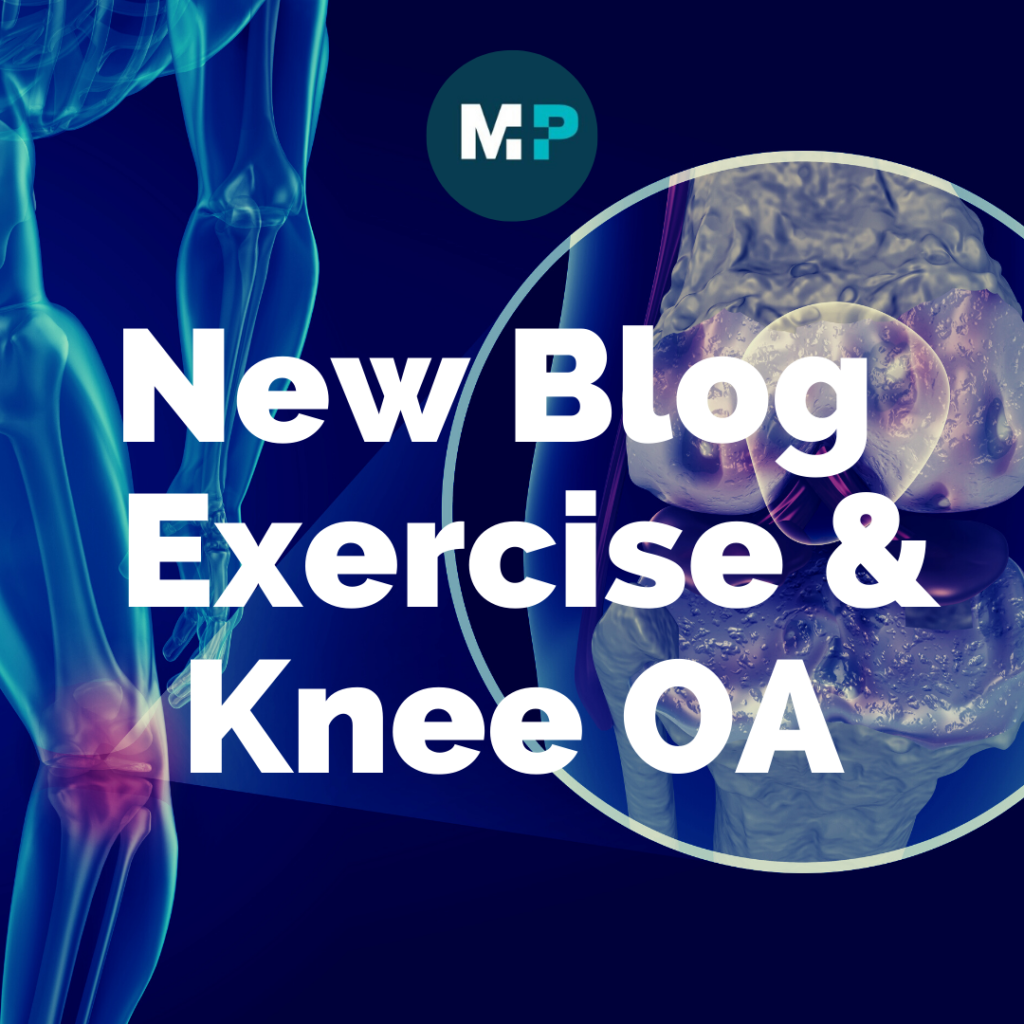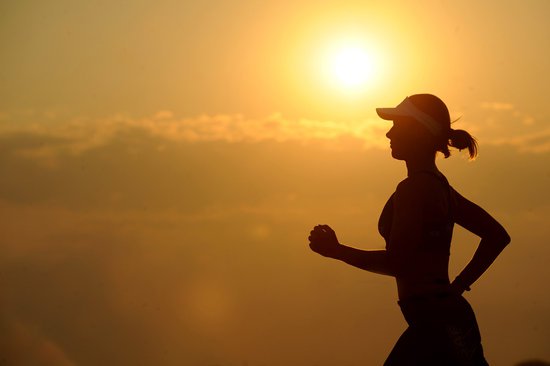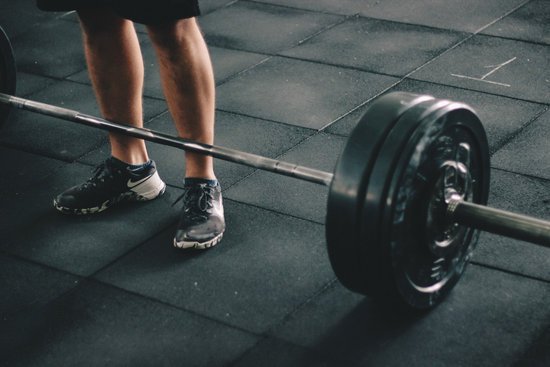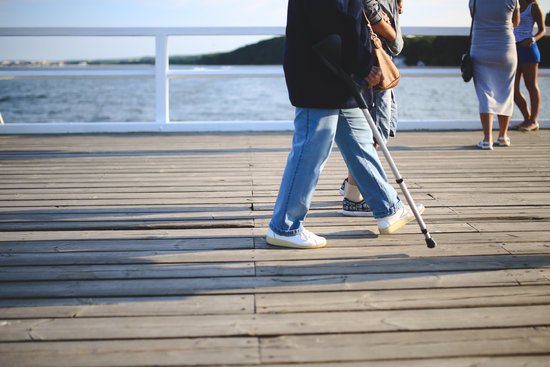Exercise and knee osteoarthritis: Why it works

Today’s topic of discussion is exercise and knee osteoarthritis. Gone are the days of “rest and see what happens”. As the population ages and becomes increasingly overweight, the incidence of osteoarthritis is rising. With good quality evidence and continuing research into osteoarthritis, we thought it was an interesting topic to discuss.
What is osteoarthritis and what causes it?
There are many potential causes of osteoarthritis of the knee. In people without prior injuries osteoarthritis is usually a biologically mediated inflammatory process.
What does that mean? In our joints, we have 100’s of proteins, cytokines, chemicals, and other compounds which are made by the synovium, or the lining of the knee joint. When our joints are healthy, the chemicals in our joint support cartilage health and nutrition (1),
So the inflammation process? Whether it is due to injury, or our metabolism, weight and diet — a switch flips. Changes occur in our knee joint that is similar to the changes associated with other chronic disease states. That switch turns on genes in our DNA that increase the production chemicals that are hostile to the health of our cartilage. So over time, an increase in those unfriendly chemicals eventually cause cartilage cell injury. That weakens the cartilage and its ability to withstand stress.

Osteoarthritis? If the cartilage is not functioning well, or if it becomes thinner, it can lead to pain, inflammation, warmth and swelling. Osteoarthritis appears to be caused by low-grade chronic inflammation. This is the same chronic inflammation held as a cause of other chronic diseases such as; Type 2 diabetes, heart disease and fatty liver to name a few.
RESEARCH ON EXERCISE AND OSTEOARTHRITIS
Researchers are determining how all these proteins and substances in our knee joint affect cartilage health and the incidence of osteoarthritis. Exercise has been proven to decrease the concentration of proteins and compounds in our knees that are hostile to cartilage health. Research shows that, IL-10, a cartilage protective chemical in the knee, was produced in response to exercise (1). Also, the concentration of a compound called COMP decreased within the knee with exercise (1) .
What is COMP?
COMP is a protein that is felt to be a bio marker of cartilage degeneration. It also shows that COMP levels in the blood increase during exercise but quickly return to baseline (1). The increase in COMP in the blood does not seem to reflect a negative effect on an arthritic knee.

Other research studies show that the concentration of COMP within the knee decreases with exercise (2). Therefore, exercise might cause the COMP within the knee to be pushed into the bloodstream, or lymphatic system with activity. Decreased COMP within the knee, combined with an increase in the concentration of Interleukin-10 appears to show that exercise is not harmful to cartilage. It may in fact be beneficial (2). Running has also been shown to reduce cytokines related to joint degradation (2).
For more than two decades the research has clearly shown that exercise is of benefit in people with osteoarthritis of the knee.
Exercise
- improves pain
- improves strength
- decreases muscle atrophy
- improves quality of life
- helps delay the need for surgery
How does the research help us as physios, help you?
We strongly recommend offering land-based exercise for all people with knee OA to improve pain and function. We tailor an exercise program regardless of your age, structural disease severity, functional status or pain levels. Exercise has also been found to be beneficial for other co-morbidities and overall health.

We prescribe an individualised exercise program, taking into account your personal preference, capability, and the availability of resources to you. Realistic goals are set and the you are educated on the need for long term adherence. Aquatic exercise may be considered for some people that need to temporarily reduce the load through the knee whilst gaining some muscular strength.
Weight management is strongly recommended for people with knee and/or hip OA who are overweight or obese. These patients are often managed by a team of allied health professionals along with their doctor. So you may find yourself with a referral to see a dietitian or exercise physiologist to assist you with your OA journey if this applies to you.
What else might your physio help you with?

It may be appropriate to offer a short course of manual therapy (stretching, soft tissue and/or joint mobilisation and/or manipulation) for some people with knee and/or hip OA. This should be considered only as an adjunct treatment to enable engagement with active management strategies and only for short term. Varus unloading braces, medial wedges for lateral knee OA, patella taping and arch supports can be considered. However these are low quality evidence based adjuncts to exercise depending on an individuals presentation.
PHYSIO TREATMENT Acute Management: - Gait Aid - Joint mobilisation - Massage - NSAIDs if necessary Long Term Management: - Exercise - Gait retraining - Hip and Knee strengthening - Neuromuscular Control - Proprioception - Cardiovascular Activities (walking, swimming, bike)
Food for thought…
There is a strong recommendation against surgery such as arthroscopic lavage and debridement, meniscectomy and cartilage repair for people with knee OA, unless the person also has signs and symptoms of ‘locked knee’.
Total joint replacement surgery is the most cost-effective and clinically effective treatment for end-stage OA, for appropriately selected individuals where conservative treatment options have failed, ie people need to try conservative first, as it has very strong evidence that prior to end stage OA, you will have significant functional and pain improvements.

Come and have a chat with our Mediphysio team and let us help you better understand any recent diagnoses of osteoarthritis. Let’s kick start your exercise journey and help you with functional goals and pain recovery!
References:1) Vuurberg G, et al. BJSM 2018 “Efficacy and potential determinants of exercise therapy in knee and hip osteoarthritis: A systematic review and meta-analysis. 2) Exercise as medicine to be prescribed in osteoarthritis: World journal of orthopaedics: 2019


Sorry, comments are closed for this post.